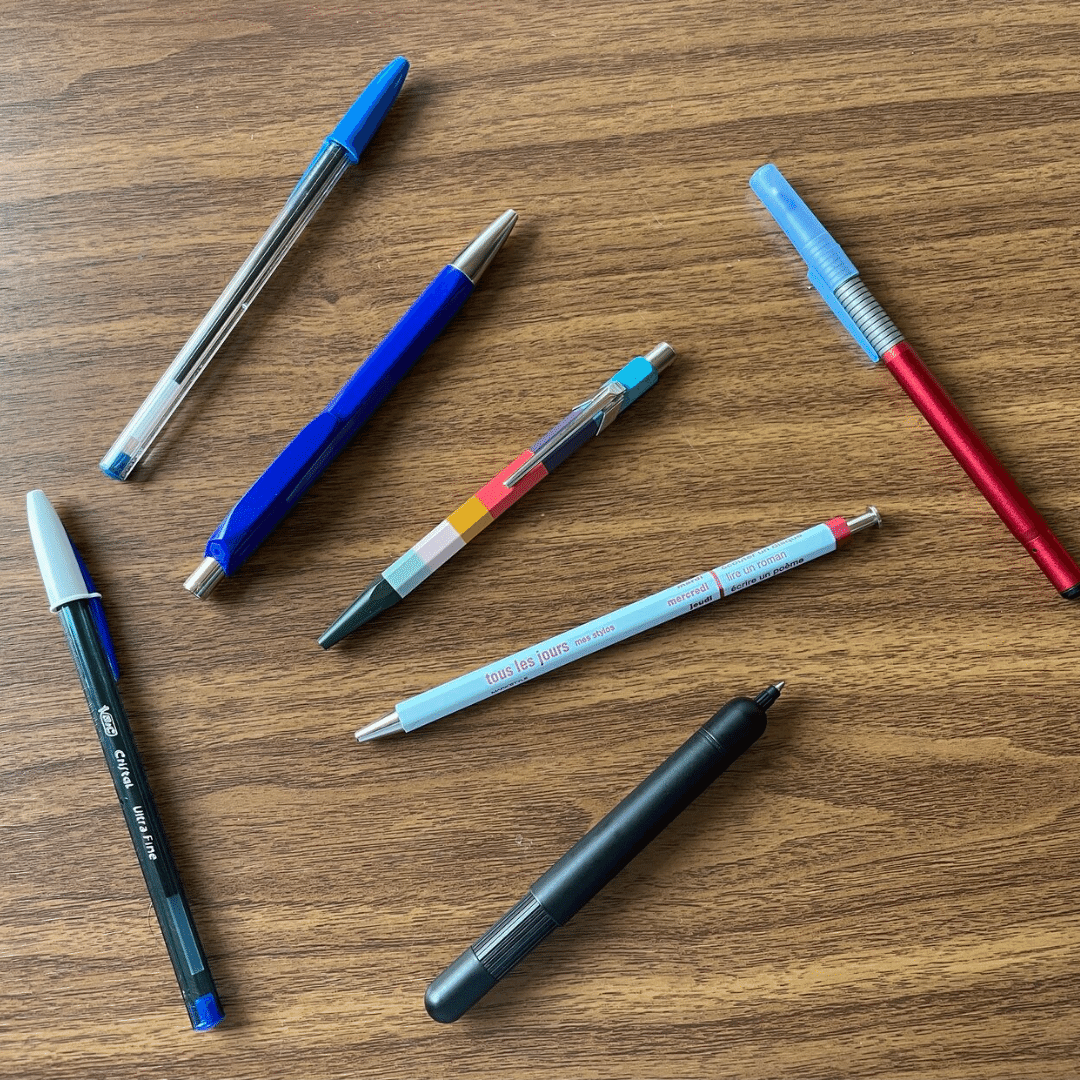
Different Ballpoint Pen Refills
The range of ballpoint pen refills is almost endless. The models vary in different types, sizes, lengths, and widths. You can also choose the hardness of the refill: whether you prefer to write softly or hard, thick or thin, there is the right ballpoint refill for your individual preferences. I give you an overview of possible ballpoint pen refill types.
Overview of the different ballpoint pen refills
With the numerous types of ballpoint pen refills available on the market, it’s easy to lose track. This is especially true for the different refills, as there are also separate refills for special ballpoint pens.
I mainly use the G2 ballpoint pen refills, which you will learn more about in the following article.
There are also the somewhat rarer mines of types D and A2. All other refills are either very rare and, therefore, hardly worth mentioning or are disposable ballpoint pens. With these, it is not possible to replace the mine, often because the mines do not have standardized shapes.
The writing length depends on the ballpoint pen refill size. As a rule of thumb, ballpoint pens with thick refills last less long than those with thin ones.
A G2 refill with writing size F (0.8 mm) writes up to 14 kilometers, while an identical refill with size B (1.2 mm) only has a writing length of up to 7 kilometers.
G2 leads based on softness and writing length
Not every refill is compatible with every ballpoint pen. There are standard mines, large-capacity mines, and many others. When purchasing a new refill, be sure to find one that fits your writing pen. G2 ballpoint pens are common, for which there are three different types of refills. Depending on your individual requirements and needs, you can choose as you wish.
Standard mine type G2
This standard refill is the most commonly sold ballpoint refill. Depending on the quality and font width, you can write up to 11 kilometers. Depending on the ink used, the writing experience also differs . You can recognize high-quality ink by the smooth, smooth writing that occurs without much pressure.
Soft mine type G2
The soft leads are characterized by a particularly soft writing feel . Frequent writers really appreciate this refill, especially when writing long texts.
In comparison, soft refills also use significantly more ink, which means you can only write about 5 kilometers. This type of ink is also more expensive than traditional ink.
Rollerball refill type G2
The G2 standardized rollerball pen refills write just as smoothly as a real rollerball pen. This gives you the feeling of a high-quality fountain pen when writing. However, the particularly soft writing feeling also goes hand in hand with a relatively short writing length of just two kilometers. They are also similarly expensive as the soft refills.
Depending on what you use your ballpoint pen for, you should adjust the refills depending on the activity and change them if necessary. Changing refills is easy with high-quality ballpoint pens. The metal thread is not overused, as is the case with cheap pens with plastic threads.
Interesting facts about ballpoint pen ink
Maybe you remember when you used your ballpoint pen to draw tattoos on your skin when you were at school? It was not uncommon for warnings to be given that the ink from ballpoint pens was toxic or harmful to the skin. However, it has now been shown that this is not entirely true.
Ballpoint pen ink is generally not toxic if it does not irritate or stress the skin excessively. However, the ink should not penetrate under the skin, so be careful with small cuts or injuries to the skin. But different skin types also react differently.
Some people react more sensitively to ink than others, and allergic skin irritations can occur. In these cases, the ink itself is often not the problem. Instead, it is the solvents used to remove the ink. The ink can often be washed off easily and gently with lukewarm water.
Dyes in ballpoint pen refills
Ballpoint pen refills contain dyes that are not entirely free and are sometimes considered carcinogenic. For this reason, there are legal limits that regulate or prohibit entirely the use of certain substances. This is intended to keep potential carcinogenic substances below a certain harmless level.

